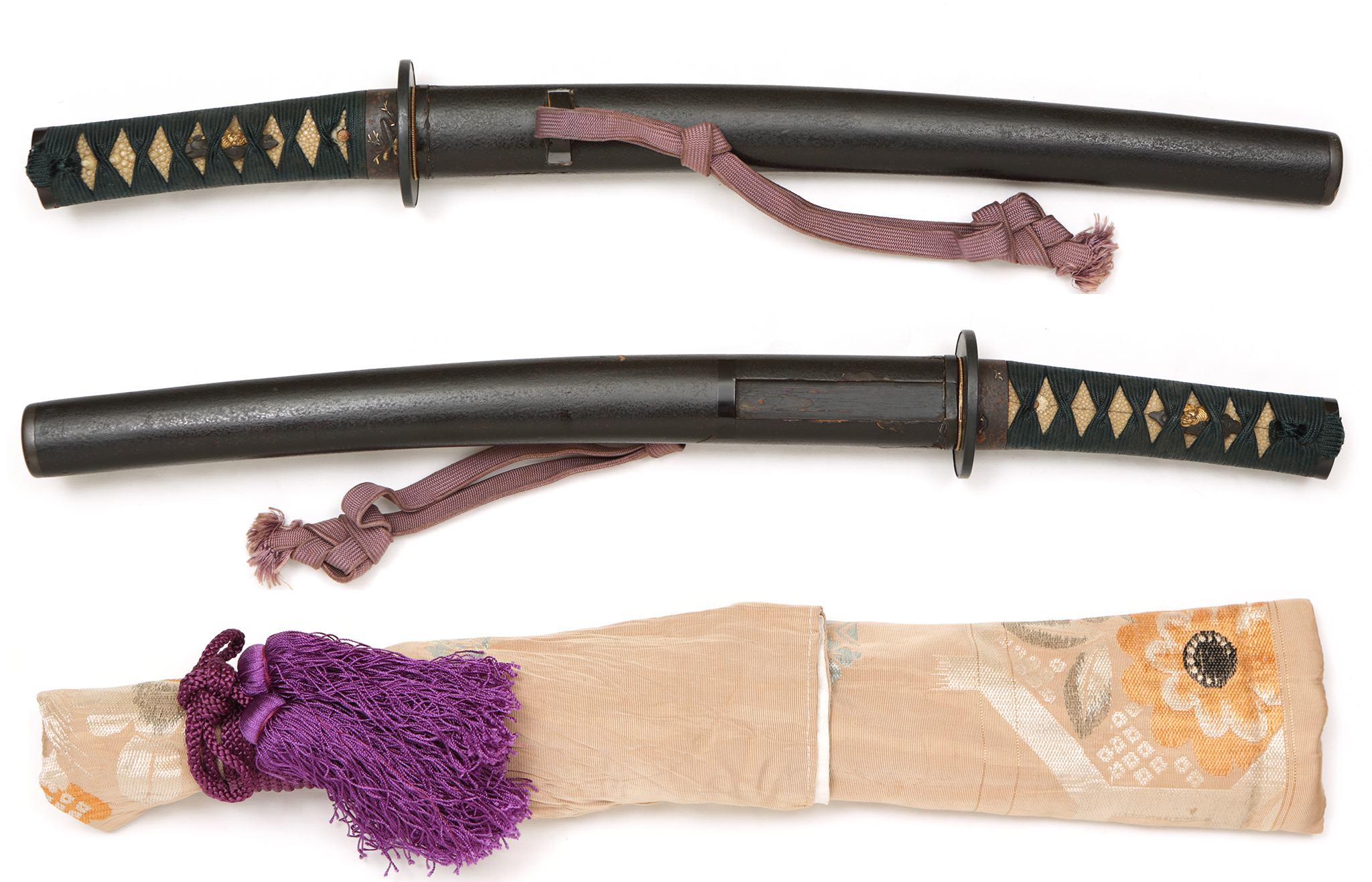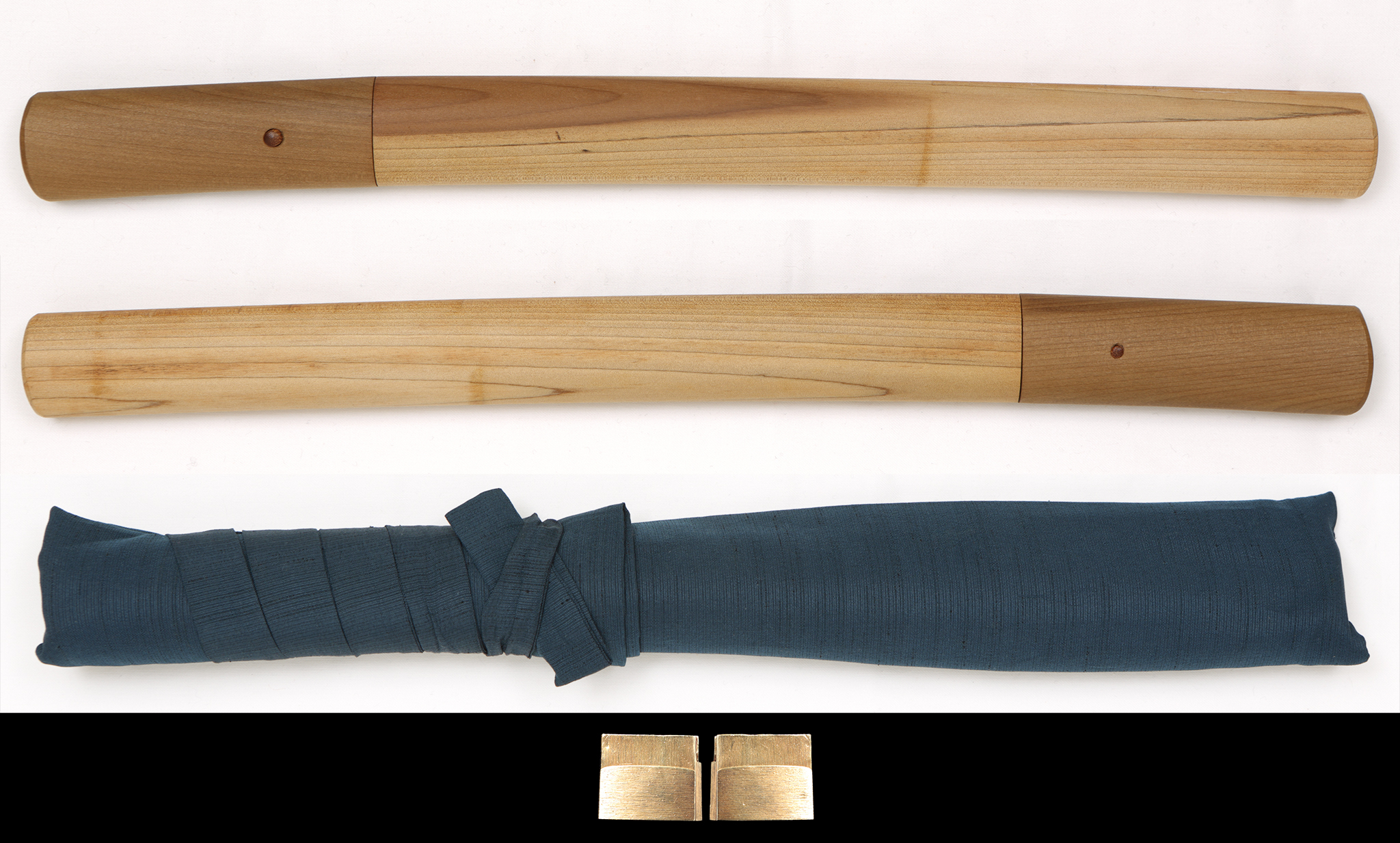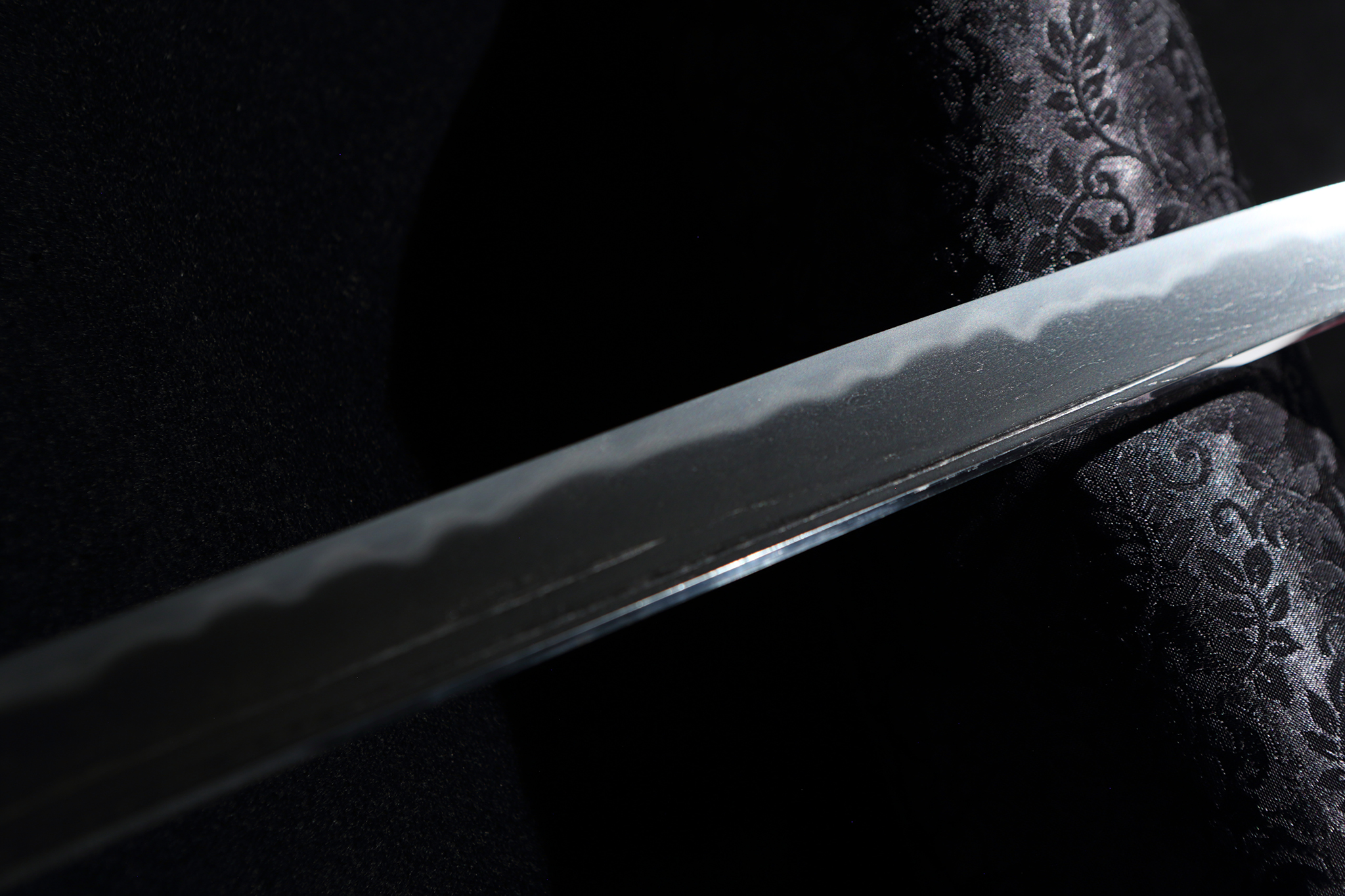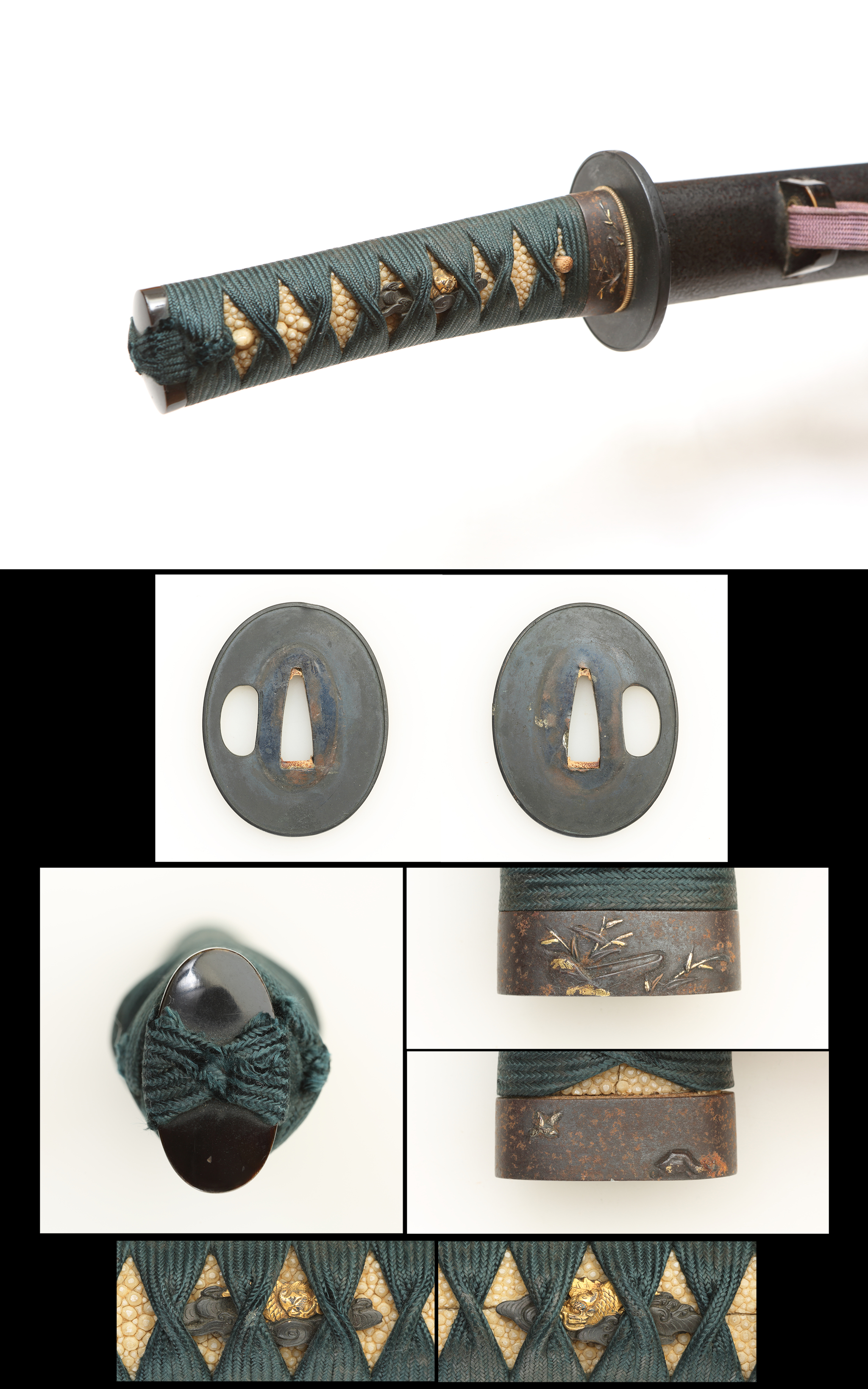
   |
Tanto, Shirasaya, Koshirae |
Kanetsune
|
[ Signature ] omote : "兼常" ura : - |
[ Size ] Blade length 27.3cm (9 sun 0 bu 0 rin), sori 0cm (n/a), moto-haba 2.47cm, moto-kasane 0.61cm, mekugi-ana(hole) 1, blade weight 173.5g , shirasaya length 53.5cm |
[ Period ] Muromachi "室町", second half of |
[ Province ] Seki, Mino "美濃 関" |
 |
[ Feature ] [ Conditions ] |
[ Attachments ] Habaki( suaka-ji, gold foiled, double), shirasaya, bag of shirasaya, koshirae, bag of koshirae and NBTHK hozon paper "保存刀剣鑑定書"( issued on 23rd March Heisei 28(2016)) |
  |
[ Item number ] A020720 [ Price ] SOLD |
Please order by E-mail.

About TOUKEN KOMACHI
BACK
TEL +81-(0)3-5284-9014/ FAX +81-(0)3-5284-9043____E-mail : s_tsukada@toukenkomachi.com
Copyright © 2009-2021 Touken komachi All rights reserved. |